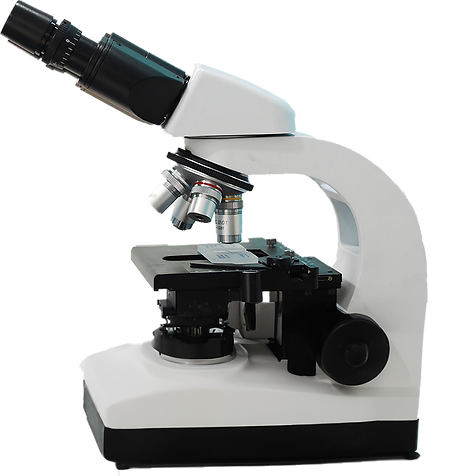
Silicone
uniquely flexible at high and low temperatures
Silicone rubber
Silicone rubber (VMQ) has remarkable material properties. It offers impressive temperature resistance typically up to 230°C and in extreme settings up to 280 °C, which makes it particularly suitable for applications in extreme temperatures. At the same time, it shows good cold flexibility at low temperatures. The ozone and weather resistance are excellent, and the electrical insulation properties are at a high level. Silicone is also characterized by a high level of physiological purity.
Chemical structure
Silicone consists of a repeating siloxane unit, with each silicon atom bonded to two oxygen atoms and two organic groups (typically methyl groups). This organic-inorganic structure gives silicone its unique properties.
Material properties and resistance
-
excellent UV, ozone and weather resistance
-
temperature-independent flexibility and elasticity
-
Mainly used in the food and pharmaceutical industries, in the automotive sector, as well as in electrical and medical technology
-
very pure material, tasteless and odorless
-
special colouring according to RAL palette
-
uniquely Temperature resistance: -100°C to 280°C
Silicone is resistant to various media. It shows resistance to many engine oils, gear oils, animal and vegetable oils, brake fluids, water, diluted salt solutions, ozone, aging and weather. However, it is not resistant to superheated steam, acids, alkalis, low molecular weight chlorinated hydrocarbons, fuels and lubricants and aromatic hydrocarbons. flexibility Silicone rubber is extremely flexible and maintains its elasticity over an extremely wide range of temperatures. Tear resistance It has moderate tear strength, making it resistant to mechanical stress. Wear resistance Silicone rubber exhibits good wear resistance, making it suitable for high abrasion applications. density The density of silicone is low, resulting in a lightweight material, particularly beneficial in applications that require lightweight components. Insulation properties Silicone has excellent insulating properties, especially electrical insulation, which is why it is widely used in the electrical industry. Weather resistance Silicone is extremely weather-resistant and retains its material properties even under the influence of UV radiation and ozone. Chemical resistance It shows good resistance to many chemicals, making it suitable for chemical industry applications. Temperature resistance Silicone rubber retains its elasticity at both extremely low and high temperatures, making it attractive for refrigeration and hot process applications. Water vapor resistance Silicone is water vapor resistant and retains its material properties even after prolonged exposure to moisture. Silicone rubber is not resistant to hydrocarbons such as mineral oils and gasolines and can be affected by certain amines and amine compounds. At sustained temperatures above 230°C, its material properties can be impaired.
Material hardness and coloring
Silicone is available in different degrees of hardness, from 20° to 80° Shore A. This variety allows it to be adapted to different application requirements. In addition, silicone can be produced specifically colored according to customer specifications, including red, black, green, white and blue, as well as in a transparent version.
Industries and applications
Silicone finds due to its highly developed resistance wide application in various industries.
In electronics, aerospace engineering, medicine and pharmaceutical industries, vehicle construction and mechanical engineering as well as the food industry.
Automotive industry: All seals for engine components such as silicone wipers, silicone radiator hoses or flat seals. Electrical and electronics industry In the form of sealing rings, silicone cables, silicone housings for electronic components. Medical and healthcare sectors Due to its physiological purity as silicone hoses and hose lines for medical devices, as well as silicone seals for medical instruments or implants food industry Silicone is used in molds and baking molds, as well as seals and conveyor belts in all food processing processes or in domestic households. Aerospace Silicone sealing profiles for aircraft doors, silicone hoses in spacecraft, Silicone insulation material for aviation electronic systems Textile industry Silicone coated conveyor belts on both sides, waterproof silicone coatings elastic bands with fabric inserts, FDA-compliant silicone coatings.
Overall, silicone demonstrates impressive versatility as a material, making it an essential material in numerous technological and industrial applications.
Silicone foam
Silicone foams combine the excellent properties of silicone with the flexibility of a foamed elastomer. These foams find application in many areas, especially in sterile environments. Silicone foam profiles are elastic, deformable and water-repellent.
Fluorosilicone
Fluorosilicone combines the high and low temperature properties of silicone with excellent resistance to fuels and oils. This makes fluorosilicone particularly suitable for applications in a wide temperature range and in contact with aggressive substances such as gasoline or alcohol mixtures.
Fluorosilicone is used in sealing technology, for example for O-rings, seals and hose inner layers in automobiles and in aerospace engineering.
Material development/compounding
high quality standards for the best durability
Our products should withstand extreme chemical and physical influences
be in long-term use.That's why we always choose the
Material that exactly meets the customer's individual requirements.
For challenging projects, you can rely on extensive expertise
and leave our network of raw material suppliers and application engineers.
We deal in depth with the conditions of use and know materials
develop, which are characterized by a wide variety of properties such as
Heat or cold resistance, weather resistance, media resistance
and long service life.


targeted material selection
Due to the high level of wear and tear on rubberand plastic products, the associated complex repair work and expensive downtime, we clarify all the physical aspects in the first conversation
and chemical influences on the product.
This allows us to offer our customers high-quality products
withoffer the best durability and resistance.
Material optimization
We optimize the physical and chemicalCharacteristics
of the material used or are specifically looking for alternatives,
to provide better resistance to different
environmental influences.
This allows us to identify your product using data sheets,Attempts or external tests to specifically improve the quality.

SBR
Elastomers
TPE
